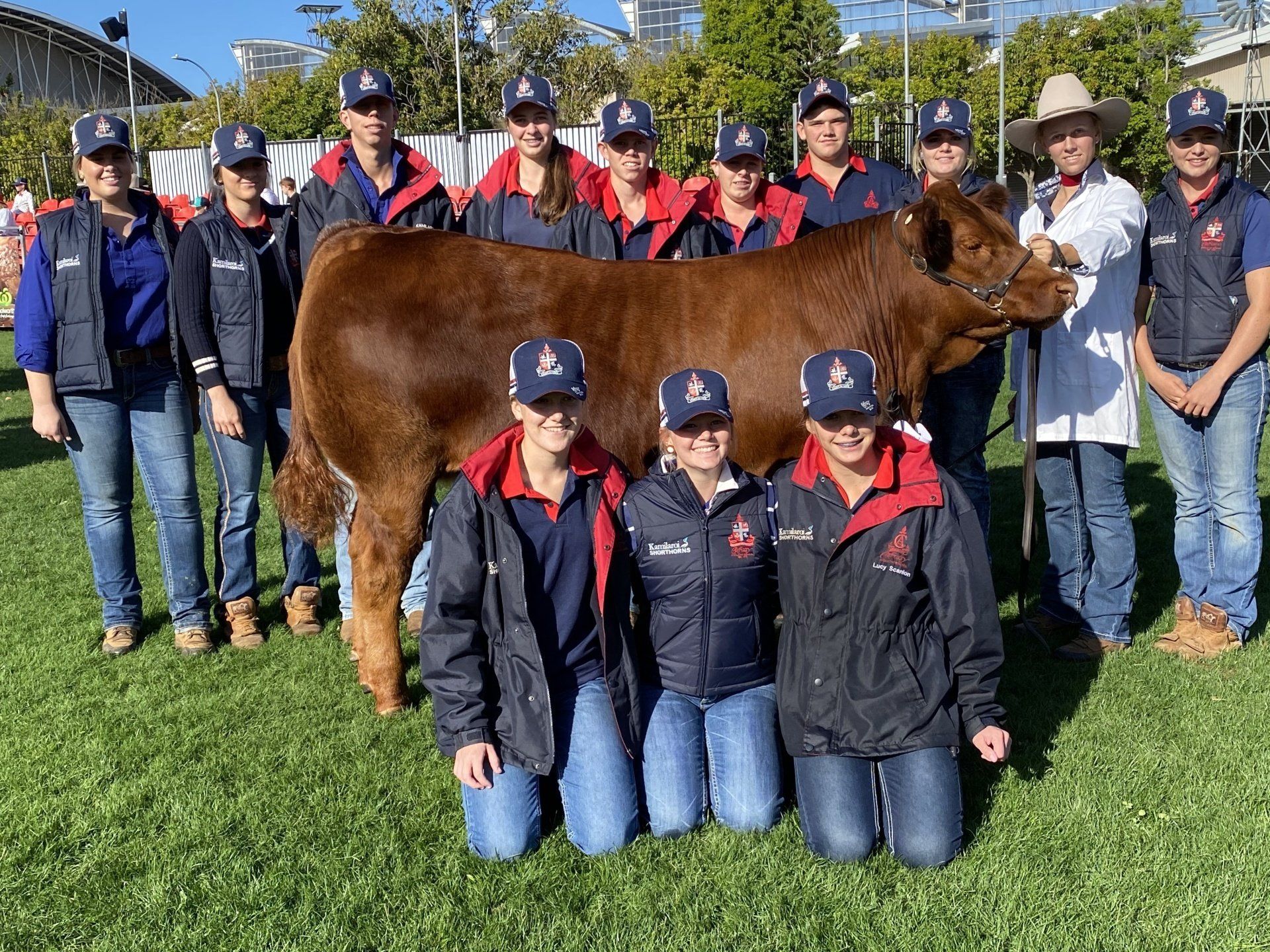1MG FlippingBooks
Calrossy Anglican School: an idyllic training ground for the ag leaders of tomorrow
Innovative, century-old Calrossy, in the agricultural heartland of NSW, offers an ag program that’s unique among Australian schools.

For the next generation of primary producers, and the broader Australian ag sector, the future looks set to present great challenges and great opportunities in roughly equal measure.
To negotiate the former and make the most of the latter, the industry will need leaders who are equipped with well-honed problem-solving skills, practical as well as theoretical knowledge, and a strong ethical compass to guide them.
One of the vast stages on which our ag future will play out is the New England region, in the Northern Tablelands of New South Wales. It’s long been one of the nation’s agricultural crown jewels, renowned for its high-quality cattle and sheep and for its outsized contributions to our wheat and cotton industries.
Anchored by the growing regional centres of Tamworth and Armidale, and dotted with communities whose names resonate in the Australian bush psyche – Moree, Gunnedah, Glen Innes – New England, with its combination of high-quality infrastructure and large-scale farming activity, is an ideal nursery for the ag leaders of tomorrow.
In other words, it’s the perfect spot for Calrossy Anglican School, which has educated generations of girls and boys from New England and beyond, many of whom have gone on to do big things in the industry. Little wonder, since Calrossy offers, among other things, a remarkably hands-on ag program that’s unique among Australian schools.
Over the century-and-change since it was founded – the school marked its centenary in 2019 – Calrossy has been a key element of New England’s educational ecosystem, and has earned a reputation for producing young women and men of character who don’t mind getting their boots dirty.
The Tamworth-headquartered K–12 boarding and day school has an innovative structure that’s been dubbed “co-ed with a difference”, and which allows for the delivery of targeted, age- and gender-specific academic and wellbeing programs. Its William Cowper campus houses a fully co-ed Junior School; Year 7–9 students study on the same campus, but in single-gender classrooms. Meanwhile, on the nearby Brisbane Street campus, Year 10–12 students do their learning in co-ed classrooms.
Calrossy’s energetic alumni community attests to the lasting impact the school has had on generations of students. With its storied old boarding houses, its strong outdoors focus, and the diverse academic, social, cultural, and athletic opportunities it offers, Calrossy is a place that tends to produce misty-eyed memories.
There’s more to it than agriculture – indeed, the school achieves consistently excellent results across the whole gamut of HSC subject areas – but for those with a budding interest in the industry, Calrossy is a kind of nirvana, offering invaluable practical experiences that students can carry with them into ag careers of all stripes.
The Calrossy ag program comprises a number of moving parts that revolve around the Tangara Trade Training Centre (Tangara), a 230-acre working farm just west of Tamworth, where students get the chance to put their ag theory into practice on an ongoing basis.
Purchased in 2010 with the help of the school community, Tangara allows Calrossy students to get out of the classroom and into the paddock, where they can practise, as the school terms it, “learning in context”.
Among other residents – including a popular, watchful Maremma dog named “Dude”– the farm is home to a herd of around 45 high-quality Kamilaroi shorthorn breeding cows and a flock of handsome Dorper sheep.
Each year, Calrossy students and staff members select the finest animals and groom them for exhibition at various agricultural shows (including Sydney’s Royal Easter Show), and prepare a cohort of animals for sale. All students, even those who aren’t studying Ag as an elective, are encouraged to take part in these start-to-finish processes by joining the school’s dedicated Cattle and Sheep Teams from Year 7 on.
The Tangara program has built a very real reputation for excellence; people still talk about the magnificent Calrossy-reared Kamilaroi shorthorn calf that sold for a record-breaking $75,000 – not a misprint – at the 2004 Dubbo National Shorthorn Show and Sale.
At Tangara, interested Calrossy students learn about artificial breeding techniques; how to move, handle, and care for animals; and how to prepare stud livestock for exhibition and sale. They also learn about and – crucially – practise many other aspects of running a stud farm, including building fences and using farm machinery; utilising ground water sustainably; identifying soil types and determining soil health; irrigating and managing pasture and crops; and using chemicals safely.
As any scientist or farmer will tell you, the benefits of “learning by doing” can’t be overstated; even the liveliest textbook can’t compete with the experience of, say, using a cattle crush or a grooming chute for the first time, or parading a prize heifer before an impressed crowd.
One great advantage of the Tangara model is the instructional flexibility it allows. Calrossy ag students address the fluid needs of the farm as they arise – just like real farmers – rather than follow a rigid theoretical program. With that said, students also “zoom out” to learn about the paper-based aspects of ag, including financial management of farms and marketing of agricultural products. Back on campus, they can help tend to the school’s veggie gardens or resident chooks.
Calrossy’s ag focus doesn’t mean other areas are neglected, and students who have no interest in which end of a cow is which have access to plenty of other enriching opportunities at the school, whether in its lively musical, theatre, debating, or sporting programs or in myriad other areas.
The school’s location and deep community and industry links allow for experiences that kids in city schools simply don’t get – from excursions to New England’s rugged gorges and national parks to enlightening visits to research facilities, feedlots, and the region’s immense stations.
Calrossy has also been using IT in innovative ways. It navigated the uncertain waters of the COVID crisis with aplomb, fully embracing online teaching models, and its class of 2020 didn’t suffer any lockdown-related dip in their HSC results – a laudable outcome.
The school is also attracting praise for its burgeoning eCalrossy Distance Education Initiative, which gives online and in-person educational opportunities to students who, for various reasons – distance, economics, family responsibilities – need to do their learning from home. It’s a far cry from the old distance-education model, where self-directed – and self-isolating – learning was the order of the day. In the eCalrossy program, an interactive, supported, connected environment allows students to ask questions as they come up, rather than jot them down for later, and to bond with teachers and classmates.
Climate change, food and water security, intensifying global competition, and the changeable tastes of foreign markets are among the challenges our agricultural sector will face in the coming decades. Calrossy’s high-achieving ag students will be well placed to tackle them, and to help lead the industry into a future in which our considerable agricultural potential is harnessed to the full.

















